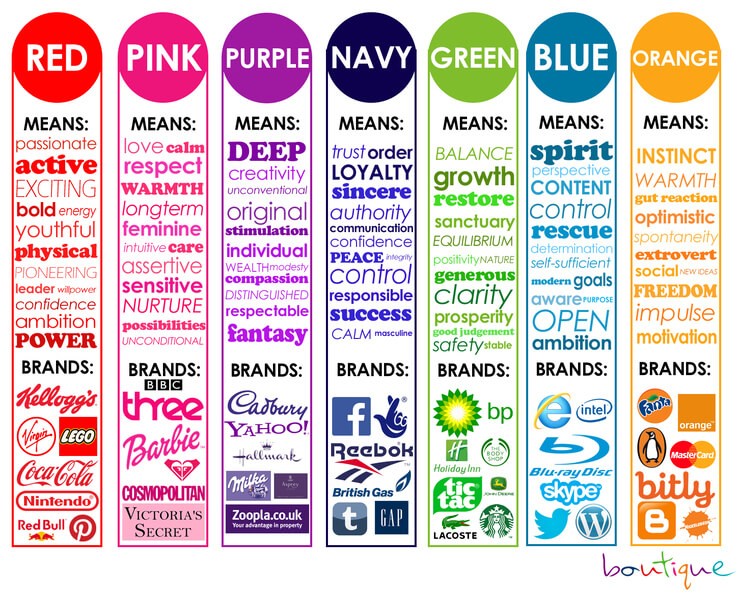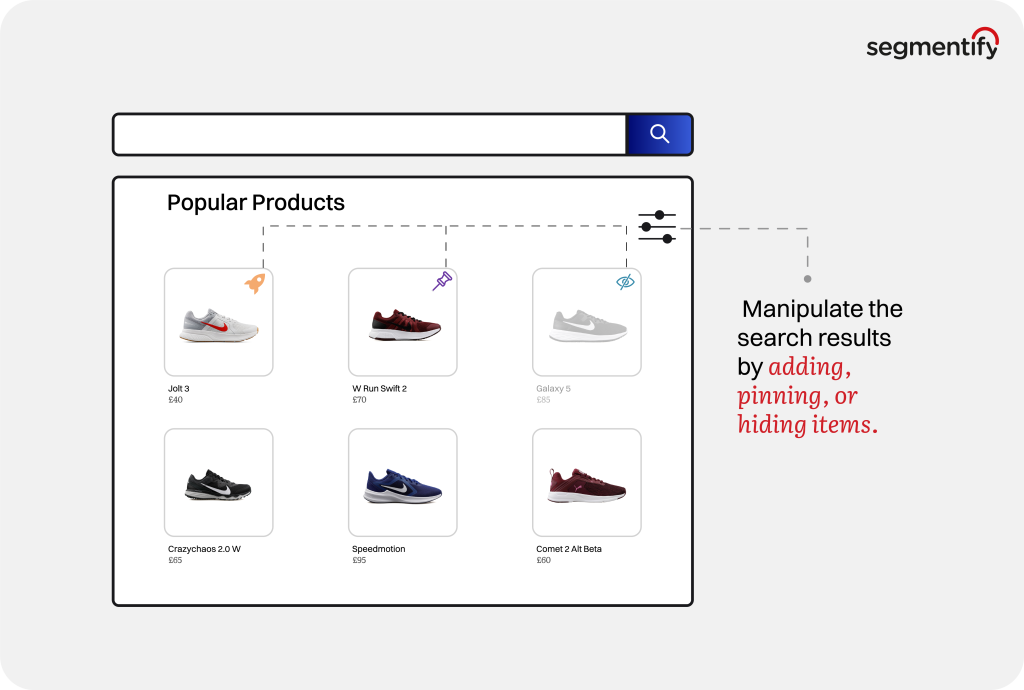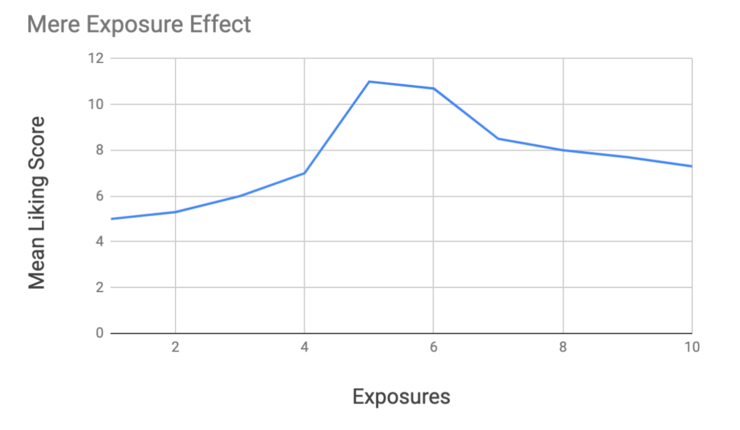Our websites use cookies. By continuing, we assume your permission to deploy cookies as detailed in our Privacy Policy.
Mere Exposure Effect Examples in Marketing and Advertising
People tend to prefer familiar people, situations, or objects.
This psychological effect is used in marketing to enhance consumer attitudes toward particular brands and products.
The article will explore the mere exposure effect, how it is used in advertising to influence consumers’ decisions, and examples of the mere exposure effect in eCommerce marketing.
What is the Mere Exposure Effect?
The mere exposure effect is the continuous exposure to a stimulus (e.g., a name, sound, or picture) that leads to greater preference or enjoyment of that stimulus. It is, in other words, a person’s constant exposure to a subject or an event.
The effect is more significant if a negative attitude to the stimulus has not been developed or if the person is unaware of the presentation.
So, how exactly does the mere exposure effect influence the decision-making process?
Simply put, when people need to make a decision and choose something, they tend to prefer the situation or person they are most exposed to.
For example, babies smile primarily at people who smile more at them. The more you see a person, the more sympathetic you find them, and the more you enjoy their presence.
Robert Zajonc, a social psychologist, wrote a seminal work on the mere exposure effect in 1968. Zajonc believed that simply being exposed to something on a regular basis was sufficient to make people enjoy it.
They did not need to receive a reward or a positive consequence when around the object, according to Zajonc—just being exposed to it was enough to make people enjoy it.
Brands often utilise the mere exposure effect in their advertising campaigns and overall marketing strategies. Familiarity with a logo, a tagline or a company image may lead you to choose that specific product.
Mere Exposure Effect: How Familiarity Breeds Attraction
Falling in Love
The mere exposure effect explains an essential factor determining people’s attraction.
According to a study by Pew (2006), 38 % of married people or people in a long-term relationship meet at the same job, school, sports centre, or church. According to this study, as the number of interactions between people grows, so does their attraction.
This evidence shows that familiarity between people, especially seeing someone daily, affects people’s decision-making and, therefore, their feelings towards each other.
How Hit Songs Are Made
According to Charles Duhigg, the allure of Top 40 lies in catering to the audience’s desire for familiarity—whether it’s their favourite tunes or those resembling them. The introduction of something novel can often be met with resistance, as listeners may find it off-putting.
“People listen to Top 40 because they want to hear their favourite songs or songs that sound like their favourite songs. When something different comes on, they’re offended. They don’t want anything unfamiliar.”
Charles Duhigg, Author of The Power of Habit
Take the example of “Hey Ya!”, a global hit in 2003. Surprisingly, this track faced initial disapproval from many listeners, prompting them to switch stations mid-song. However, the radio station was determined to transform this unpopular tune into a chart-topper.
Their strategy involved strategically placing “Hey Ya!” between two well-known songs, preventing listeners from changing stations. This ingenious approach resulted in the song gaining familiarity with the audience, ultimately turning it into a massive hit.
A noteworthy revelation from radio stations was that individuals claiming to be tired of Celine Dion didn’t switch stations when her songs played. Leveraging this insight, “Hey Ya!” was strategically aired after a Celine Dion track.
Consequently, when introducing unfamiliar music, embedding it between familiar songs proved to be an effective method!
Examples of Mere Exposure Effect in Marketing and Advertising
How do marketers and advertisers use the mere exposure effect to influence consumer decisions? Let’s take a look at the examples:
1. Family in Advertising
Using family as a marketing tool has been prevalent since the Industrial Revolution.
Brands, particularly those targeting broad audiences, employ specific strategies to captivate their intended customer segments. Incorporating families into advertisements is a widespread practice, as the concept of family resonates with a vast majority of the global population. By featuring families in ads, brands aim to evoke an instant sense of familiarity among the audience.
Given that the notion of family is universally recognised, it continues to be a cornerstone in advertising. Leveraging the familiarity established through such advertisements not only engenders a connection but also cultivates a sense of intimacy between the audience and the brand.
2. Billboard Advertising
While some often perceive billboards and brochures as outdated marketing techniques, major brands persist in utilising them for product promotion.
The primary purpose of billboard advertisements is to swiftly engage individuals, leaving a lasting impression that lingers in the viewer’s mind even after passing by.
Since these ads are typically encountered at high speeds, they must convey their message at a glance. Consequently, they typically feature minimal amount of text in large fonts accompanied by a vibrant and captivating graphic.
And in recent years, the billboard advertising got a 3D makeover:
Brands strategically design billboard ads to capture consumer attention and imprint their products in the minds of the audience. The ultimate goal is to foster familiarity so that, when consumers are making purchasing decisions, they are more inclined to choose the product they recognise the most.
3. Colour Psychology in Marketing
Companies cannot control emotional responses towards their brand, but they can direct these perceptions through design, style, and colour.
Because our brains are programmed to absorb and memorise new shapes, the presentation of a logo can significantly impact its effectiveness.

Brands use colour theory while designing their logos and advertisements to catch the customers’ attention and make them remember the brand. Establishing familiarity through these visual elements increases the likelihood that customers will choose the brand’s product when making purchasing decisions, especially during supermarket visits.
4. Popular Music in Advertising
Brands strategically integrate elements of familiarity into their advertisements to connect with consumers. Despite the potentially high cost of music licences, particularly for top hits, the use of popular music remains a prevalent marketing strategy.
Research by Dr. Bradley Vines, employing neuroscience methods, indicates that pop music can enhance attention, emotion, and memory by 20%. Additionally, the neurological wear-in score demonstrates a notable increase in the effectiveness of a pop song across multiple viewings, suggesting heightened consumer engagement as exposure to the commercial grows.
3 Examples of Mere Exposure Effect in eCommerce Marketing
After discussing how the mere exposure effect is used in advertising, let’s look at how eCommerce can use it as part of their marketing strategy:
1. Showing Bestsellers on the Homepage
By prominently featuring bestsellers on the homepage, eCommerce platforms leverage the mere exposure effect.
Frequently viewed and popular products become familiar to visitors, increasing the likelihood of conversion. As users repeatedly encounter these items, they develop a sense of trust and recognition, influencing their purchasing decisions.
Pro tip ⚡: Employ personalisation to tailor the presentation of bestsellers on the homepage to each user, ensuring relevance and optimising the impact of the mere exposure effect.
2. Sending Cart Abandonment Emails
eCommerce businesses send cart abandonment emails to remind customers of items left in their shopping carts to utilise the mere exposure effect.
The repeated exposure to these products serves as a gentle nudge, keeping the items fresh in the customer’s mind. This timely reminder often prompts customers to return to their abandoned carts and complete the purchase.
Pro tip ⚡: Enhance the effectiveness of cart abandonment emails by consistently including images of the abandoned products.
3. Pinned Products on the Search Box

eCommerce platforms can strategically use the search box to showcase pinned or recommended products. By consistently exposing users to specific items as they search, the mere exposure effect comes into play.
Over time, users become familiar with these recommended products, potentially influencing their choices and increasing the likelihood of making a purchase.
Pro tip ⚡: It’s crucial to regularly monitor click-through rates and sales numbers for pinned items on the search box to ensure their effectiveness in converting visitors.
Beware the Pitfalls of Mere Exposure Effect
Strategically exposing a brand and its products to potential customers is a powerful marketing tactic.
However, caution must be exercised, as excessive exposure may not always yield positive outcomes. Customers might become fatigued from the relentless barrage of advertisements, potentially causing a decline in the company’s reputation.

As illustrated above, an optimal threshold exists for the number of exposures and the mean liking score. While increasing exposures tend to boost the liking score, there is a point where further increments may have diminishing returns.
Recognising and refraining from surpassing this threshold to avoid adverse consequences is crucial.
Harnessing and incorporating the mere exposure effect into your overall marketing strategy can significantly elevate sales rates and brand awareness. Careful calibration of exposure levels is critical to optimising the positive impact while avoiding the pitfalls associated with overexposure.
Editor’s Note: This article was originally published on January 5, 2022, and was updated for accuracy and comprehensiveness on January 18, 2024.





